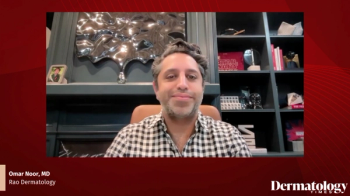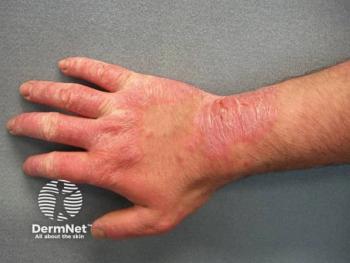
Chronic Itch Pathophysiology and Therapeutic Advances
Key Takeaways
- Biologics and small molecules targeting IL-4, IL-13, and IL-31 show efficacy in reducing inflammation and pruritus in atopic dermatitis and prurigo nodularis.
- Neuro-centric therapies, including gabapentin, pregabalin, and kappa opioid receptor agonists, are promising for neuropathic pruritus and chronic pruritus of unknown origin.
At the 2025 Revolutionizing Atopic Dermatitis Conference, Gil Yosipovitch, MD, explored the pathophysiology of chronic itch through the lens of type 2 cytokine inhibition, neuromodulatory therapies, and more.
“I like RAD because I think that it emphasizes a lot of components of inflammation in the skin, and atopic dermatitis is a great hallmark condition where the inflammatory immune system works with nerves, and therefore we can learn a lot from RAD to treat other conditions that involve inflammation of the skin,” said Gil Yosipovitch, MD, in an interview with Dermatology Times.
Yosipovitch, professor of dermatology, the Stifel Endowed Chair of medical dermatology, and the director of the Miami Itch Center at the Doctor Philip Frost Department of Dermatology at the Miller School of Medicine in Miami, presented pearls for managing itch at the
Yosipovitch first discussed the growing number of biologics and small molecules that modulate type 2 inflammation and neuroimmune signaling. In particular, IL-4, IL-13, and IL-31 blockade have shown significant antipyretic efficacy in AD and prurigo nodularis. The therapeutics discussed in his session included dupilumab, lebrikizumab, and nemolizumab, each demonstrating impact not only on inflammation but also directly reducing pruritus intensity. Additionally, JAK inhibitors such as abrocitinib and povorcitinib were noted for their downstream effects on multiple itch-related cytokine pathways.
The session also included neuro-centric therapies, particularly those related to neuropathic itch and chronic pruritus of unknown origin (CPUO), a condition frequently observed in elderly patients presenting with severe itch and minimal or no primary rash. Yosipovitch highlighted the potential for IL-targeted therapies such as dupilumab and nemolizumab for CPUO, citing both clinical experience and ongoing trials as promising developments.2
From a neuropharmacologic perspective, gabapentin and pregabalin were mentioned as GABAergic agents with established utility in neuropathic pruritus. According to Yosipovitch, emerging data on kappa opioid receptor agonists, particularly difelikefalin and intranasal butorphanol, support their role in refractory pruritus where conventional anti-inflammatory agents may fall short.
Yosipovitch mentioned the need for deeper investigation into sodium channel inhibitors (eg, Nav1.7 and Nav1.8) and other modulators of itch-specific neural pathways. He advocated for a more integrated understanding of skin–brain signaling, particularly in conditions where immune drivers play a minimal role.
Lastly, Yosipovitch noted that while AD remains a central model for inflammatory pruritus, insights gained from RAD extend into broader dermatologic contexts where chronic itch is a dominant feature. He emphasized the importance of translational research that bridges immunodermatology and neurobiology to inform future treatment strategies.
References
- Alexis A. Yosipovitch G. Managing itch. Presented at: 2025 Revolutionizing Atopic Dermatitis Conference; June 6-7, 2025; Nashville, TN
- Nattkemper LA, Kim BS, Yap QV, Hoon MA, Mishra SK, Yosipovitch G. Increased systemic levels of centrally acting B-type Natriuretic Peptide are associated with chronic Itch of different types. J Invest Dermatol. Published online March 22, 2024. doi:10.1016/j.jid.2024.02.026
Newsletter
Like what you’re reading? Subscribe to Dermatology Times for weekly updates on therapies, innovations, and real-world practice tips.



















